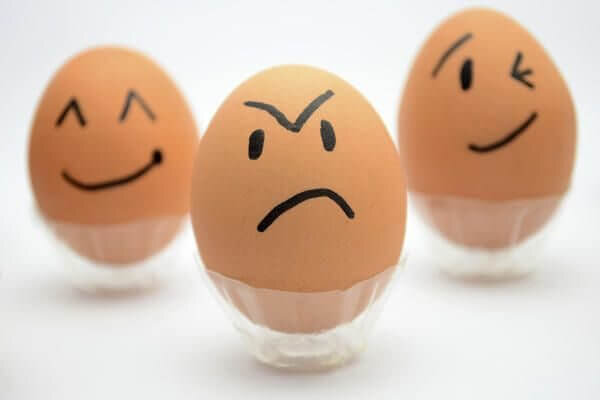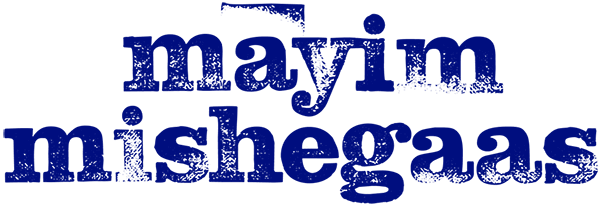
On the list of “mental illnesses people misunderstand,” manic depression is right up there with Obsessive Compulsive Disorder (OCD) and Post-Traumatic Stress Disorder (PTSD), both of which I have explained in previous posts.
Since today is National Bipolar Day, let’s clear up some misunderstandings about people who are bipolar.
I have a PhD in Neuroscience and worked in the field of child psychiatry during the time I completed my psychoneuroendocrinology thesis at UCLA. In addition, Bipolar Disorder runs in my immediate family, with pretty much every branch having at least one significantly affected individual; typically it is the males in my family who have it.
This leads me to our first important fact about Bipolar Disorder. There is a genetic component and it does run in families. This has been well-documented in many genetic studies. However, as with any disease that has a genetic component, environmental and social factors affect whether or not someone will actually have the disorder. There is no exact science to figuring out who is going to have symptoms if they have the predisposition, but elaborate genetics analyses are revealing more and more about the modes of transmission of this disorder. For our purposes, it seems best to understand that there are genetic patterns that predispose individuals to the disorder, and that some people get it and others don’t.
I also wanted to note that manic depression and bipolar are actually the same diagnosis. Manic depression is more technically descriptive but it’s really not inclusive enough of a term for all of the varieties of manic depression that exist, so that’s why we use the term bipolar.
Bipolar Disorder (or Manic Depression) is characterized by two “poles”: depression and mania. Both have to be present for there to be a diagnosis of bipolar.
Depression is defined as a depressed mood or a loss of interest or pleasure in daily activities for more than two weeks. Depression can look like not wanting to get out of bed, losing or gaining weight, not sleeping well, crying a lot, feeling hopeless and experiencing these symptoms as separate from a significant event such as a death or divorce. (For more on the differences between grief and depression, check this link out.)
Mania is a bit more complicated and is defined as a period of abnormally and persistently elevated, expansive, or irritable mood that lasts at least 1 week. Manic people sometimes go on shopping sprees and max out credit cards, have sex indiscriminately and exhibit other reckless behavior. People who are manic tend to have ‘pressured’ speech and their brains work faster than others – or they – can keep up with. Manic people tend to not need a lot of sleep.
There are various versions of Bipolar Disorder. The most talked about types are Bipolar I and Bipolar II. Bipolar I is more rare and consists of extreme mania and less severe depression. Bipolar II typically has more ‘moderate’ mania symptoms but deeper and more severe depression. Sometimes individuals will “cycle” through mania and depression and this can be very problematic as well as exhausting and taxing on the body.
Bipolar Disorder can be managed very well with psychiatric medications. Some have side effects, but many work very well and people with Bipolar Disorder can live happy, fulfilled symptom-free lives. Many artists in history have been suspected of having Bipolar Disorder or have been vocal about living with this disorder. Here is a link with some examples.
Psychotherapy can help individuals living with Bipolar Disorder manage their symptoms and treatment plan well. Recognizing symptoms, finding positive ways to address symptoms before they get out of hand, and having a strong support system are all important. Taking medication even when you feel better is a challenge for those with Bipolar Disorder; once you start feeling better, it’s tempting to want to stop taking medication. This usually leads to relapses and medication compliance tends to be a recurring issue for those who have Bipolar Disorder.
You don’t have to be on medication if you are diagnosed with Bipolar Disorder; only you and your psychiatrist and family can decide what’s best for you. But if you are experiencing depression that alternates with periods of not needing a lot of sleep, having very big ideas about your place in the world, or participating in risky or ‘out of your personality’ behaviors, please reach out to one of the resources below and get help.
There are many wonderful, loving, successful and satisfied individuals living with Bipolar Disorder. Let’s all work towards being stigma-free about mental illness – if you are suffering from Bipolar Disorder or another mental illness, it’s time to get help.
Resources:
http://www.webmd.com/bipolar-disorder/guide/bipolar-disorder-resources-1
https://psychcentral.com/lib/resources-for-bipolar-disorder/
http://www.dbsalliance.org/site/PageServer?pagename=education_resources




 Read More From Mayim
Read More From Mayim
Grok Nation Comment Policy
We welcome thoughtful, grokky comments—keep your negativity and spam to yourself. Please read our Comment Policy before commenting.